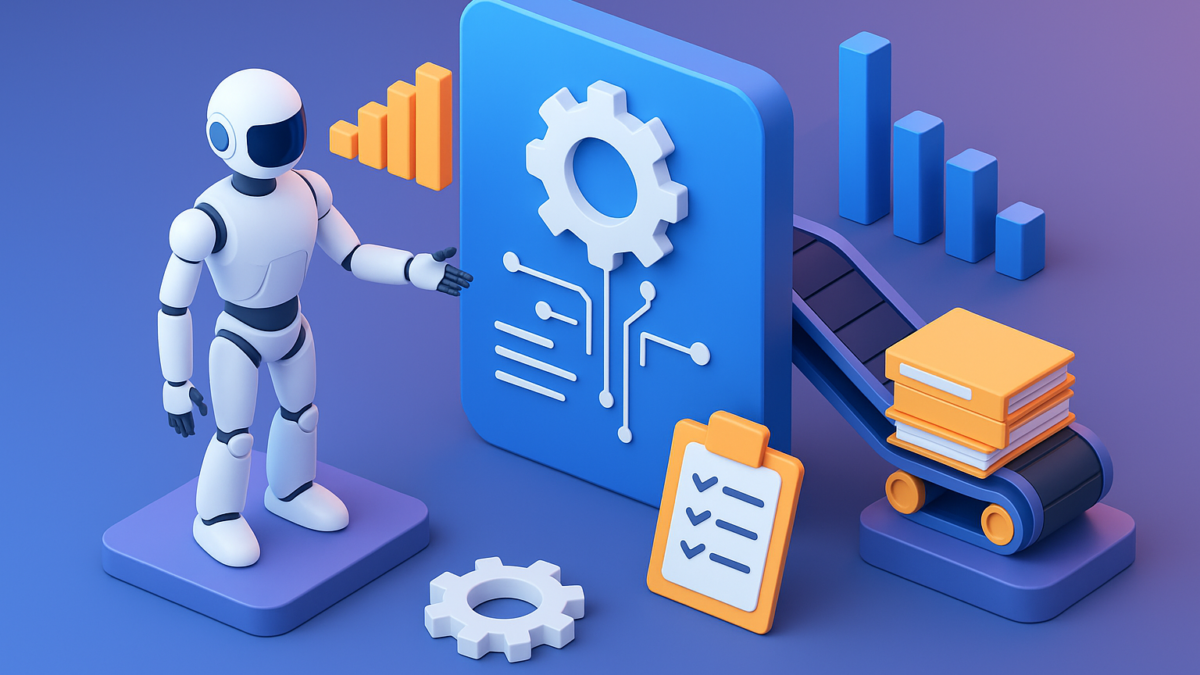AI-Driven Automation: How It’s Disrupting Traditional Business Processes in 2025
Artificial intelligence (AI) has evolved from being a futuristic concept to a business-critical reality. In 2025, AI-driven automation is no longer optional—it’s a necessity for companies aiming to stay competitive. From finance to supply chain, marketing to HR, traditional processes are being reimagined, streamlined, and disrupted by AI technologies that deliver speed, efficiency, and precision at scale.
But disruption doesn’t always mean destruction. While AI-driven automation challenges traditional workflows, it also creates opportunities for innovation, agility, and growth. Let’s explore how businesses across industries are being transformed in 2025.
Why AI-Driven Automation Is Disrupting Legacy Models
Traditional business processes have long relied on manual intervention, repetitive workflows, and human oversight. While effective, these models are often slow, prone to errors, and resource-heavy.
AI-driven automation changes the game by:
- Reducing Costs: Automating repetitive tasks eliminates inefficiencies.
- Improving Accuracy: AI algorithms minimize human error in decision-making.
- Scaling Operations: Businesses can handle larger workloads without increasing headcount.
- Enhancing Agility: Real-time insights help organizations adapt faster to market changes.
This combination of cost savings + efficiency + innovation is why businesses are rapidly adopting AI automation across their value chains.
Key Areas Where AI Is Disrupting Traditional Processes
1. Finance & Accounting
- Traditional: Manual data entry, invoice processing, reconciliation.
- AI Disruption: Smart automation tools now handle fraud detection, predictive forecasting, and expense management. By 2025, over 80% of financial operations are expected to be partially or fully automated.
2. Human Resources (HR)
- Traditional: Lengthy recruitment cycles, manual performance reviews.
- AI Disruption: AI-powered platforms enable automated candidate screening, predictive employee retention models, and intelligent performance analytics, making HR more strategic and less administrative.
3. Supply Chain & Logistics
- Traditional: Reactive inventory management and slow procurement cycles.
- AI Disruption: Real-time AI analytics optimize demand forecasting, route planning, and inventory tracking, reducing bottlenecks and lowering costs.
4. Marketing & Customer Engagement
- Traditional: One-size-fits-all campaigns.
- AI Disruption: Personalized, AI-driven marketing powered by predictive analytics, chatbots, and automated content creation is delivering 3X higher engagement rates.
5. IT Operations
- Traditional: Manual monitoring and issue resolution.
- AI Disruption: AI-driven automation ensures predictive maintenance, proactive cybersecurity monitoring, and self-healing IT systems—drastically reducing downtime.
Benefits of AI-Driven Automation in 2025
- Efficiency Gains: Processes that once took hours or days are now completed in minutes.
- Cost Reduction: Businesses save on labor, overhead, and error-related expenses.
- Improved Decision-Making: Data-driven insights guide strategy in real time.
- Employee Empowerment: AI handles repetitive tasks, freeing employees for creative, high-value work.
- Customer Experience Enhancement: Faster service, personalization, and proactive support improve loyalty.
Challenges Businesses Face With AI Automation
Despite the benefits, disruption comes with hurdles:
- Workforce Displacement: Employees fear automation replacing jobs.
- Implementation Costs: High initial investments may deter SMEs.
- Data Privacy & Security: Increased reliance on AI requires stronger compliance frameworks.
- Change Resistance: Traditional teams often struggle with digital-first processes.
Forward-thinking businesses are overcoming these challenges with reskilling programs, phased implementation, and strong governance models.
Real-World Examples of Disruption
- Banking: JPMorgan uses AI to analyze contracts in seconds, replacing thousands of hours of manual review.
- Retail: Amazon’s AI-powered supply chain predicts demand surges and adjusts logistics instantly.
- Healthcare: AI automation assists with diagnostics, patient scheduling, and personalized treatment recommendations.
These examples highlight how AI-driven automation is no longer experimental—it’s reshaping industries today.
The Future of AI-Driven Automation
By 2030, AI is projected to contribute $15.7 trillion to the global economy, with automation at its core. The future will see:
- Hyper-Automation: End-to-end processes fully automated across departments.
- AI-Augmented Workforces: Humans and machines collaborating seamlessly.
- Smarter Decision Engines: AI not just automating tasks, but shaping business strategy.
Businesses that embrace this disruption early will gain a competitive edge, while those clinging to outdated processes risk being left behind.
Conclusion
AI-driven automation is disrupting traditional business processes in every sector. What was once manual, repetitive, and resource-intensive is now intelligent, agile, and scalable.
For organizations in 2025, the question is no longer “Should we adopt AI automation?” but rather “How fast can we adapt to it?”.
Those who leverage AI to innovate rather than resist disruption will unlock growth, resilience, and long-term success in the digital-first economy.
Call to Action (CTA)
Looking to stay ahead in the AI-powered future of work? At iTMunch, we bring you the latest insights, trends, and strategies that shape tomorrow’s businesses. Our expert B2B lead generation services precisely target your market, cut through the noise, and deliver leads ready to convert. Let us help you fill your pipeline with high-impact opportunities—get started today.
You May Also Like: Beyond Downloads: Measuring the True ROI of Whitepapers in 2025





